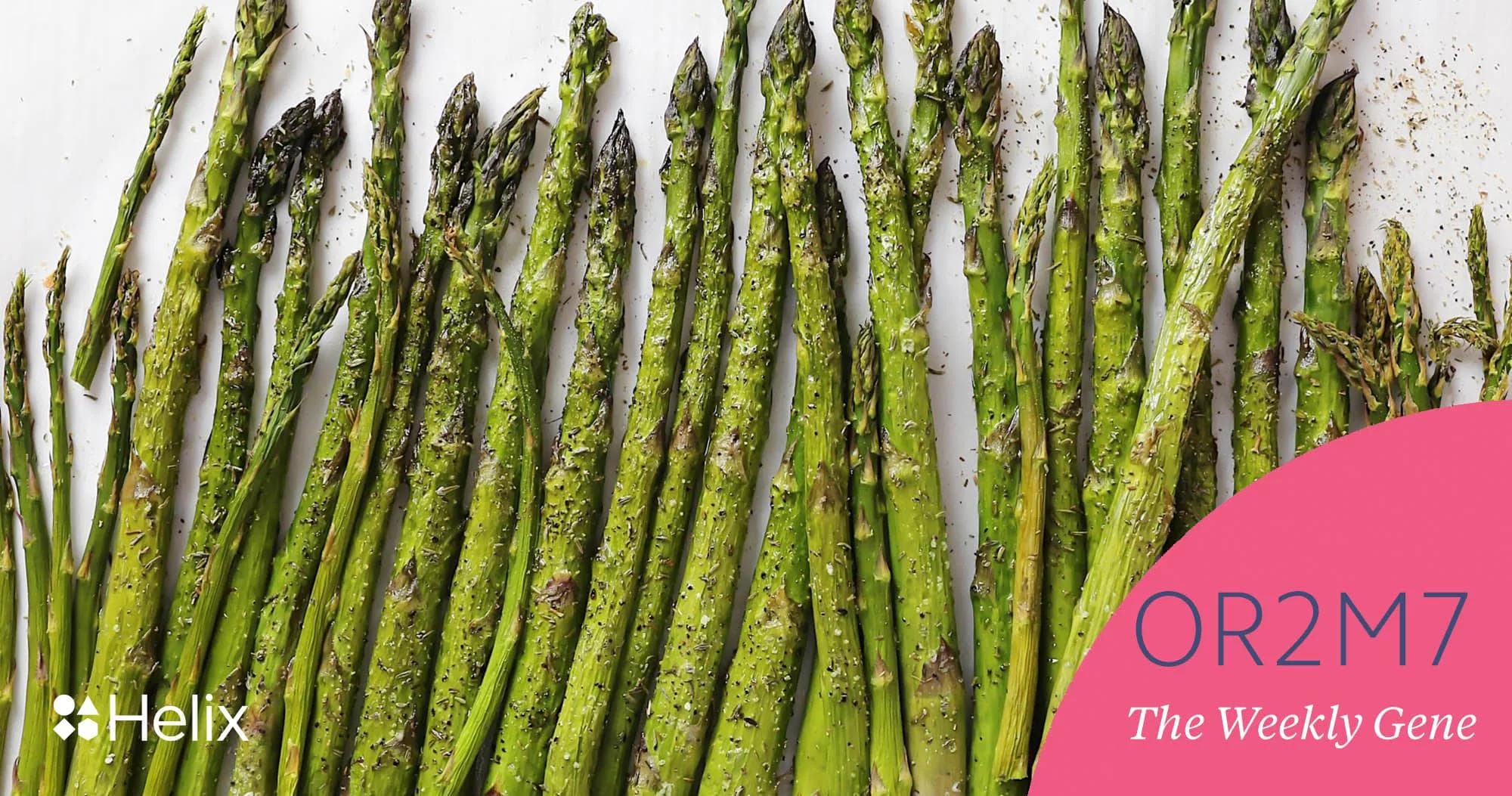Asparagus, genetics, and your incredibly complex sense of smell

Whether it’s at the Thanksgiving dinner table, or at the park bench during a summer BBQ, you’re likely to experience a variety of seasonal smells: turkey cooking, ribs smoking, and fresh pies cooling off, just to name a few. And if asparagus is on the menu, you might experience an odor of… a very different kind.
Some people report that their urine has a deeply unpleasant smell after consuming asparagus, and their OR2M7 gene may be to blame!
Our ability to smell thousands of different chemicals allows us to determine where sources of food are, to determine if those foods are edible, and to continually learn about our immediate environment. Although it’s an important system, scientists don’t yet know exactly how it works, in part because the olfactory system (the collection of cells and organs that allow us to smell) is extremely complex and diverse. In fact, there are nearly 1,000 genes coding for olfactory proteins—that’s more than any other group of genes in the entire genome1.
OR2M7 is among many olfactory genes that code for olfactory receptors, which are proteins that detect airborne molecules and initiate a relay of signaling back to the brain. There are approximately 400 different types of olfactory receptors located on the tips of specialized neurons in the nasal cavity2. Humans have between 6-10 million of these neurons, each one using a single type of olfactory receptor which detects specific types of chemicals1. Through overlapping patterns of smell detection, our body is able to identify an enormously wide array of different smells.
Variations in our senses of smell between individuals is common, and genetics play a role in those variations. Changes in the DNA can cause different levels of olfactory receptor production. Similarly, changes in the DNA can also cause the olfactory receptors to recognize different molecules, or to be less sensitive to those molecules1. It is somewhat unclear how genetic variants affect a person’s sense of smell, because olfactory systems are very difficult to recreate in the research lab. Large scale genetic studies have offered up some interesting insights into how our sense of smell works, though, including evidence that genetic variation in the OR2M7 gene can help determine if a person noticed an unpleasant smell in their urine after eating asparagus3.
After digesting asparagus, humans excrete a chemical known as methanethiol in their urine. This volatile compound contains sulfur and has been described as having a rotten cabbage smell. One research study encompassing 2,748 people found that nearly 40% of them could smell this compound, while the other 60% couldn’t4. This study (along with others)1,3 analyzed the DNA of research participants to try to identify why only some could smell the metabolite. They found hundreds of DNA variants that might explain it, but the two most statistically significant variants were located within the OR2M7 gene, making it a powerful candidate gene. A candidate gene is one that’s likely responsible for a given trait—in this case, the ability to smell methanethiol—but scientists don’t yet have conclusive proof.
So, when you see the veggies being passed around, remember that your genes might come into play even after dinner’s done!
- Ignatieva, Elena V. et al. “Genetic Basis of Olfactory Cognition: Extremely High Level of DNA Sequence Polymorphism in Promoter Regions of the Human Olfactory Receptor Genes Revealed Using the 1000 Genomes Project Dataset.” Frontiers in Psychology 5 (2014): 247. PMC. Web. 22 Nov. 2017.
- Jiang, Yue, and Hiroaki Matsunami. “Mammalian Odorant Receptors: Functional Evolution and Variation.” Current opinion in neurobiology 34 (2015): 54–60. PMC. Web. 22 Nov. 2017.
- Eriksson, Nicholas et al. “Web-Based, Participant-Driven Studies Yield Novel Genetic Associations for Common Traits.” Ed. Greg Gibson. PLoS Genetics 6.6 (2010): e1000993. PMC. Web. 22 Nov. 2017.
- Markt, Sarah C et al. “Sniffing out Significant ‘Pee Values’: Genome Wide Association Study of Asparagus Anosmia.” The BMJ 355 (2016): i6071. PMC. Web. 22 Nov. 2017.